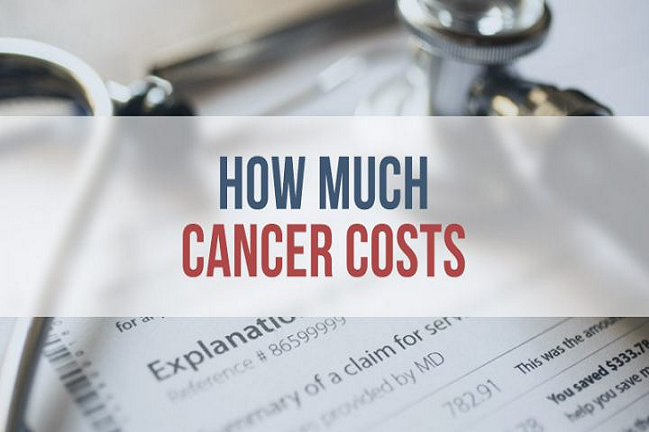Session 3 starts with the valid points concerning lack of research in the field of cancer care: lack of money, manpower, and time, leading to very little research. Next point brought forward was public-private partnership leading to the reduction of cancer burden with the last speaker talking about a new model to provide highly subsidized cancer care to all. In conclusion, it was surmised that political will is required to ensure that research is incentivized and done, while public-private participation can reduce the cost of cancer care and research needs to focus more on screening techniques and early diagnosis techniques.
Session 2 brought up the points of the taxes being levied on machines used in cancer care, manufacturing outside India leading to increased cost of machines, orphan drug relevance and the requirement of biosimilars. The conclusion reached was that taxation on the machines should be reduced or removed, manufacture of those machines should move to India as joint ventures, change in orphan drug policy and the need for increased biosimilar production.
A look into the current situation of the Indian manufacturing capabilities
The total market for diagnostic and medical equipment in India is worth about $3.5 billion and is expanding at an annual rate of 18%. While some “top of the line” Western device companies can sell their triple-A products to private Indian hospitals, most public hospitals will require simpler, portable, easy-to-use and more affordable versions of Western diagnostic and cancer treatment products.
Manufacture of medical electronic equipment forms a negligible part of total electronics production, but there has been a steady increase in the value of its production. In the 15 year period from 1988 to 2003, its value increased 12 fold to Rs. 421.81 crores, at about 18% per annum. [4] The increase in the manufacture of some imaging equipment, such as medical X-ray and ultrasound equipment can be attributed to the manufacture/assembly of these by multinationals such as General Electric (GE) and Siemens, for sale in India and other neighboring countries. GE has partnered with local Indian companies to develop cancer-related services and products. GE and the Indian Institute of Technology Madras’ Healthcare Technology Innovation Center (HTIC) announced a 3-year research and development agreement in January 2014. GE and India’s Max Healthcare announced a partnership in March 2014 to develop cancer treatment protocols and pathways, a training institute and a virtual expert consultation program.
Overall, while manufacturing may seem to be picking up in the country, it is more in the form of subsidiaries, as joint ventures and as part of contract manufacturing. Increasingly, multinationals and other medical device companies from the US are outsourcing several of their activities to India, as a way of reducing costs in manufacturing, R and D, clinical trials and other medical services.
According to a July 2011 paper by the Indian Statistical Institute, the average cost of cancer care per patient in a government hospital (the All India Institute of Medical Sciences in New Delhi) amounted to Rs 36,812. And reports suggested that in private hospitals, the cost of cancer treatment ranged between Rs 2 to 8 lakhs.
As of 2015, this cost jumped to between Rs. 2.5 lakhs for a six month treatment with the cheapest generics to Rs. 25 lakhs and more for extensive treatment. Some breast cancer patients, for example, need targeted treatment drugs, which cost around Rs 75,000 for a course; a patient could need up to 17 courses. Similarly, a drug called Avastin – used to treat colon, kidney, lung and gall bladder cancer – can add around Rs 8 lakh to a patient’s bill at around Rs 1 lakh a cycle. ‘Hotspot’ drugs are now used for cancers with detectable and actionable mutations for example Dasatinib, Crizotinib, Osimertinib, Levatinib etc can cost upto 1 lakh rupees per month and need to be taken for indefinite periods. CAR T cell therapy for acute leukaemia costs 360,000 USD per treatment. Immunotherapies like Keytruda fur lung and colon cancer costs Rs. 3 lakhs per dose.
Additionally, procedures cost a fortune because hospitals have to pay a fortune for imported equipment. For example, a linear accelerator, which is used for radiation therapy, costs around Rs 10 crore, plus an import duty of around Rs 1 crore. Similarly, a PET CT scan machine, used to pinpoint the location of cancers, is anywhere between Rs 3 crore and Rs 6 crore. The costliest is a CyberKnife used for radiotherapy which costs around Rs 30 crore.
The cost to treat cancer in India might be cheaper than most developed nations, but it still is heartbreakingly expensive for the average Indian. And the exponential increase in cost that we have seen over the years is set to continue, with statistical analysis showing treatment in 2020 costing anything between 10 lakhs to 50 lakhs and more. Given the state of the middle class in this country and the rising cancer incidence, these costs could potentially bankrupt a large part of our population, driving them below the poverty line.
Cancer research in India has grown extensively over the last two decades, both in terms of size and impact. Government and state policy makers, scientists and clinicians in India have vigorously supported cancer research from studies to achieve large-scale health outcomes using low-tech solutions to areas of highly advanced cancer science. However, there remain many issues which reveal serious gaps in public policy in India. Most importantly, there is a clear need for setting a strong research agenda across the country.
Research systems in India need to take into consideration not only modern medicine, but also traditional medicine or what is now referred to as ‘AYUSH’: ayurveda, yoga, unani, sidha and homeopathy. With this inclusion, the research agenda for cancer becomes vast and diverse and the task of delivering cancer research programs becomes more nuanced compared with high-income, developed countries.
Adding to this complexity is the variation in research activity across different states and union territories in India. Worldwide, evidence has shown a correlation between research activity and positive outcomes for patients. However, there are large gaps in research output between states within India. Research programs have to, therefore, take into account the capacity of each state to support research infrastructure, training, and patient care. These gaps can be addressed with greater collaboration between the states and with international stakeholders. Greater engagement with pharmaceutical industries at a regional level, research on repurposing of medicines, and development of novel formulations will also go a long way in improving access to more affordable cancer treatment.
Eminent researchers and medical practitioners have recommended that policy for cancer research and development be embedded within the National Cancer Control Program. This will impact patient outcomes and improve cancer care in India and help achieve important objectives: it will help identify priority areas for research, build academic networks, assess cost effectiveness and impact of research on individual and population outcomes and develop human resources for research.
With the right support, India has the capability to be a world leader in cancer research that delivers cost-effective solutions to deliver affordable cancer care.
The term “biosimilar” refers to a biological product that is highly similar to a licensed biological agent (reference or originator product) with no clinically meaningful differences in terms of safety, purity, or potency. Biological agents or “biologics” are widely used in oncology practice for cancer treatment and for the supportive management of treatment-related side effects.
As biologics are considerably more costly than small-molecule drugs, their use has placed an increasing economic demand on healthcare systems worldwide. Biosimilars are designed to be highly similar to existing branded biologics, but because biologics cannot be exactly copied, biosimilars should not be referred to as generic, exact versions of the innovator biologic. Biosimilars have the potential to increase access and provide lower-cost options for cancer care as patent protection for some of the most widely used biologics begins to expire. Regulatory requirements for biosimilars are evolving, as are global harmonization and/or standardization strategies that can facilitate their robust clinical development. As such the Indian guidelines on similar biologics are comparable in many respects to biosimilar guidelines of USA and EU. India has adopted a “sequential approach” (like “stepwise approach” – US and EU) to market biosimilar products.
| PROPERTIES | GENERICS | BIOSIMILARS |
| SIZE | Small | Large |
| MOLECULAR WEIGHT | ~150 Daltons | ~150,000 Daltons |
| STRUCTURE | Simple and well-defined | Complex with potential structural variations |
| MANUFACTURING | Predictable chemical process to make identical copy | Specialized biological process to make similar copy |
| COMPLEXITY | Easy to fully characterize | Difficult to characterize |
| STABILITY | Relatively stable | Sensitive to storage and handling conditions |
| ADVERSE IMMUNE REACTION | Lower potential | Higher potential |
| MANUFACTURING QUALITY TESTS | ≤ 50 | ≥ 250 |
| APPROVAL REQUIREMENTS | Small clinical trials in healthy volunteers | Large clinical trials in patients |
With Biosimilars, not only will patients have more treatment options, but they will also potentially have the ability to get the medications they need for serious disorders at much lower costs than the original biologics. With biosimilars becoming more widely available, consumers can expect the same efficacy, safety and reliability as the original medication at a reduced price.





